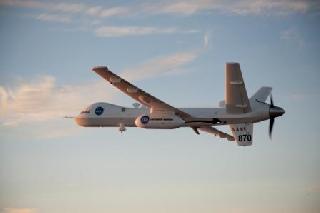
PSLV C-16 mission during its launch from the Satish Dhawan Space Centre in Sriharikota on Wednesday. Photo: PTI
SRIHARIKOTA (PTI): India's PSLV-C16 rocket Wednesday successfully launched into orbit the latest remote sensing satellite Resourcesat-2 that would study and help manage natural resources along with two nano satellites.
ISRO's homegrown workhorse Polar Satellite Launch Vehicle placed in a 'Polar Sun Synchronous Orbit' Resourcesat-2, Youthsat and X-Sat about 18 minutes after it blasted off from the Satish Dhawan Space Centre launch pad here, 90 km from Chennai, at 10:12 am.
"PSLV-C16 Resourcesat-2 mission is successful," a jubilant Indian Space Research Organisation Chairman K Radhakrishnan announced shortly after all the three satellites were hurled into space one after another 822 km above earth in a text book launch.
The ISRO chief's announcement was cheered by the battery of scientists at the mission control centre who heaved a sigh of relief as they were gripped by an added anxiety following two successive failures of GSLV missions last year.
The 1,206 kg Resourcesat-2 with a space life of five years replaces Resourcesat-1 launched in 2003 and would provide data with enhanced multispectral and spatial coverage on natural resources.
The GSLV mission in December last year failed when the homegrown GSLV F06 carrying communication satellite GSAT-5P exploded mid-air less than a minute after lift-off and fell into the Bay of Bengal.
GSAT-5P, carrying 24 C-band and 12 extended C-band transponders, plunged into the sea when the destruct command was issued as the rocket veered from its flight path.
Earlier, the GSLV-D3 mission carrying GSAT-4 had also failed in April 2010, dealing a blow to India's space programme.
Today's PSLV flight was its 17th successive mission after the failure of its maiden voyage in September 1993.
Besides Resourscesat-2, the PSLV rocket also launched Youthsat, weighing 92 kg, a joint Indo-Russian nanosatellite for stellar and atmospheric studies. The third satellite was 106-kg X-sat, an image applications spacecraft built by Nanyang Technological University, Singapore. This is the first time, ISRO is launching a Singapore-built satellite.
Radhakrishnan said the launch of two foreign satellites showed the PSLV's reliability had been recognised internationally.
"It is a glad moment for the entire ISRO community. ISRO has proved its mettle and the mission performed exceedingly well. It’s a reassurance to the nation that the confidence in ISRO is fully justified," Mission Director P Kunhikrishnan said in remarks that summed up the mood of the space scientists who needed the morale booster after the double GSLV failure.
It was anxiety all the way for the Indian space scientists at the Mission Control since the rocket blasted off and injected the satellites into space. Each stage of successful separation was greeted with loud applause.
The Resourscesat-2 with three high resolution cameras on a single platform would capture images that will be useful in assessing the health of crops, monitoring deforestation and water levels in reservoirs and lakes besides the snow-melt in the Himalayas.
ISRO officials said it would help in catering to the national and global data needs to address multiple aspects of resource inventory and monitoring in specific areas of applications including agriculture, water resources, rural development, bio-resources and geological exploration.
Data from the satellite would help in facilitating a variety of applications including disaster management and related activities.
Apart from the three cameras with high, medium and coarse resolutions, Resourcesat-2 also has two solid state recorders with a capacity of 200 GB each to store images which can be accessed by the ground stations later.
It also carries Automatic Identification System (AIS) from COMDEV, Canada, as an experimental payload for ship surveillance in VHF band to derive position, speed and other information about ships.
Minister of State for Parliamentary Affairs and PMO V Narayanaswamy described the successful launch as a landmark event and said the Prime Minister and the government "are with the scientists to do more such work."
 Previous Article
Previous Article Next Article
Next Article












The Indian Air Force, in its flight trials evaluation report submitted before the Defence Ministry l..
view articleAn insight into the Medium Multi-Role Combat Aircraft competition...
view articleSky enthusiasts can now spot the International Space Station (ISS) commanded by Indian-American astr..
view article